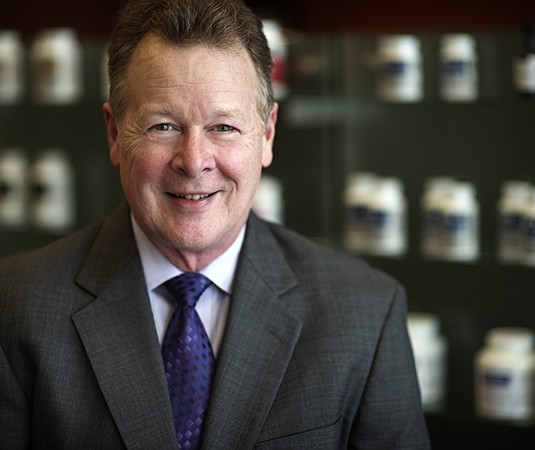by Jim Paoletti, BS Pharmacy, FAARM, FIACP – Director of Education | Power2Practice
We all have patients who want to lose weight. Although surprising, some of them are still trying to reduce fat in their diet instead of sugar and sugar producing starches.
Here is a simple bullet list that I use to explain sugar to patients:
- Food manufacturers use sugar in their products to get consumers addicted.
- Most processed foods contain high amounts of sugar.
- High fructose corn syrup is a common source of sugar in many foods as it is the cheapest form of sugar available. HFCS can lead to fatty liver and should be totally avoided.
Patients who want to lose weight should become familiar with the Glycemic Index of their favorite foods. High and medium glycemic index foods should be totally avoided while trying to lose weight. Many patients are unaware of how foods affect blood glucose levels. They may think a white potato is OK to have to have at dinner, orange juice is a good way to start the day, watermelon is a good snack, or that bananas are a healthy choice. But these all are high glycemic index foods, so education is a key part of the weight loss program
Sugar is everywhere in our food sources, especially in the liquids we consume. Sodas, vitamin-enriched water, fruit juices, energy drinks, sport drinks, flavored coffees, presweetened tea, and even flavored kefir and yogurt drinks often contain ridiculously high amounts of sugar.
Changing what a patient drinks to help lose weight is often a major challenge. Getting patients to adhere to drinks like water, which can be flavored by citrus wedges, or non-sweetened tea (no caffeine and organic is best choice) and almond or coconut milk is not easy, but is critical to the first step in weight loss.
Losing weight requires resetting the body’s metabolism. Keeping the weight off requires adopting healthy eating habits on a regular basis. To begin, patients need give up all sugar, including all the hidden sugars in processed foods. If patients can successfully do this, they will generally lose a significant portion of their weight over 4-8 weeks.
Most patients will reach a plateau, and will need to take an additional step to reset or increase their metabolism. At this point, in addition to giving up all sugars, they need to also avoid all grains. If they again reach a plateau in a few weeks, increase their exercise regimen. I find it more successful long term to take one step at a time rather than initiate a very restrictive diet along with a new exercise regimen all at once. Of course, patients commit to several months of a restricted diet if they want to successfully reset their metabolism. Even a little cheating on the diet makes it much more difficult to reset the way the brain is regulating metabolism and change to more fat burning rather than fat storage.
Patient will often lose weight for a while, then unexplainably gain some back. As insulin resistance develops throughout the body, the last place it occurs in in the liver. It is at this point that the parameters we measure to indicate insulin resistance, or metabolic syndrome, become abnormal. The weight gained as the result of developing insulin resistance occurs mush earlier in the process. As insulin resistance is reversed, there comes a point in the process that one may actually gain some weight as part of the reversal process. I explain to patients this process and tell them to be patient and that it is a sign of reversing insulin resistance. More information is available in the book, “The Schwarzbein Principle,” by Diana Schwarzbein, M.D.
Most health care practitioners know that the CICO model is outdated, but many patients still believe that eliminating fats and starving themselves is the best way to lose weight. They really need to understand that weight loss is not all about the calories in vs. calories burned. Choosing a low carb diet is beneficial for most patients, in that even without counting calories, most overweight people will eat far fewer calories while on a low carb diet. Sugar and starch actually increase hunger, while a low carb diet can cause a person to want to eat less. There are concerns with a low carb diet however: If patients also attempt to restrict fat intake as well as carbohydrate intake, they are limiting the body’s main two sources of energy, which can lead to hunger, cravings and fatigue. The brain reacts as if they were starving, which cause fat retention and less fat burning. Patients do not continue a diet that makes them hungry and tired while they are not losing weight.
So patients on a low carb diet need to include “good” monounsaturated and polyunsaturated fats in addition to healthy saturated fats to help them feel satisfied.
- Monounsaturated fats (MUFAs) raise HDL, lower LDL and help protect the arteries from plaque buildup. MUFA sources include: olive oil, avocado, cashews, and almonds.
- Polyunsaturated fats (PUFAs) lower LDL and contain heart-and-brain-nourishing omega-3 fatty acids plus omega-6 fatty acids, which are healthy in small amounts when obtained from raw food sources. PUFA sources include: salmon, herring, mackerel, flax, walnuts and tofu.
- Saturated fats, such as coconut oil and butter, are ideal for people on low-carb diets and those trying to cut out refined sugars. Saturated fats are a concentrated source of energy and thus, should be eaten strategically.
AVOID manufactured “low carb” products. Bread, for instance, may have less carbs than white bread if made from different grains that flour, but it still contains plenty of carbs. Avoid “low fat” products, as they are usually loaded with sugar or carbohydrates to enhance flavor.
Losing weight is not just about what they eat, but how and when they eat as well. Proper digestion can be affected by the surroundings during meals, and eating while stressed can result in poor food choices.
I usually advise patients to do the following:
- Don’t wait until you are hungry to eat. Hunger is the result of blood glucose dropping, which creates cravings for stimulate foods that will raise blood sugars more quickly. Snacks should consist of protein, and good fats and protein at each meal will help to sustain blood sugar levels.
- Eat smaller meals more often. Our metabolism is best adapted to consume small amounts of food throughout the day rather than 3 set meal times each day. Most people consume too much food at an average meal, and then go too long before they eat again. In an ideal situation, we would consume a small portion of for at least 6 times a day. While that goal is unrealistic for most people, we should aim more towards that manner of eating.
- Chew well. Dr. James Wilson, author of “Adrenal Fatigue: the 21st Century Syndrome,” advises to chew each bite 30 times before swallowing. Most patients are astonished at how quickly they eat if they take the time to count and try to reach 30 chews! I explain to patients that chewing is the first and perhaps most important part of the digestive process. Chewing well allows the digestive enzyme amylase in the saliva to predigest a portion of the food before they even swallow. Chewing well will slow down the eating process, and often results in consumption of less food.
- Slow down and enjoy the eating process. Concentrate on the enjoyment of eating using mindfulness techniques. Enjoying each bite as you chew will slow down eating, and increase awareness of approaching fullness. Many patients consume a meal in less than 20 minutes, yet research has shown it can take that long for the brain to receive the signal that you are full.
- Avoid distractions while eating. Eating should not be done at the same time someone is driving a vehicle, having a business meeting, typing up a report, sitting in a loud and noisy environment, or even watching TV (if it’s not a program that makes you laugh or smile).
- Never eat when you are emotional – do relaxation techniques prior to eating.
- Do not overeat. I recommend to stop eating after one full plate. Waiting 10 to 30 minutes will usually result in a feeling of being full. If you continue to eat until you feel full, you most likely have eaten more than you need.
Related Reading: The Biology of Food Addiction & The Calorie Hypothesis, by Jill Carnahan, MD.
Jim Paoletti, BS Pharmacy, FAARFM, FIACP, is the Director of Education at Power2Practice and a Clinical Consultant with over 30 years of experience creating and using bio-identical hormone therapies in both retail pharmacy and clinical practice.
Jim is a Diplomat in Functional Medicine in addition to being a former faculty member for the Fellowship of Functional Medicine. Jim is also author of the book “A Practitioner’s Guide to Physiologic Bioidentical Hormone Balance.”
At Power2Practice, he applies his wealth of knowledge and experience by hosting live webinars and creating useful content, such as blogs, podcasts and clinical support tools.


